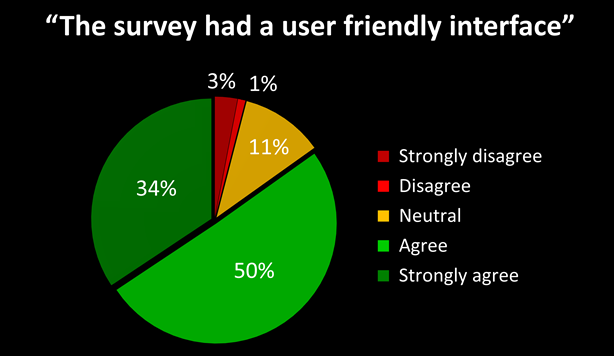The commuter survey contained 103 questions, and the employer survey contained 56 questions. Researchers took great care to develop comprehensive surveys that were also logical, efficient, and readable (see readability results or survey development references). Both survey instruments were reviewed and approved by the Texas A&M University Institutiona
l Review Board. The instruments employed extensive survey logic so that respondents saw only relevant questions based on their previous answers. The online survey instruments were hosted by SurveyGizmo.
The surveys inquired about the following topics:
- Commutes to and from work and school.
- Mode-specific follow-up questions.
- Employer policies and commuter preferences.
- Experience with commute alternatives.
- Incentives (financial and other services).
- Adaptation to change.
- Communication preferences and demographics.
Survey instruments functioned on desktop and laptop computers, tablets, and smartphones. Both surveys were available in English and Spanish, and a print version of the commuter survey was also available.
Online Survey Instrument (Commuter and Employer)
Link to Survey Instrument
Visit the link multiple times to experience how the survey adapts based on answer choices, especially when indicating individual or company response on the first page.
Print Version of Commuter Survey Instrument
The printable survey form covers the same topics as the online version. Please note that printable survey forms are not identical to online survey forms due to space and paper survey form limitations (files are in Adobe PDF format).
Respondents’ Experience with Survey Instruments
Each survey respondent was asked if they felt the survey was user-friendly. More than 4 out of 5 agreed the survey was user-friendly.

More than 1,400 commuters provided some advice about how to improve the survey in the future. The most common response was to make the survey shorter. Other frequent remarks included adjustments to one question or another, adding more other comment boxes, using more vivid colors, etc. Researchers were also pleased to find that that many people remarked that, although long, the survey was well thought out and interesting to complete. In addition, many people remarked the best way to improve the survey would be to simply ensure something results from the information; respondents wanted to see change and improvement.




